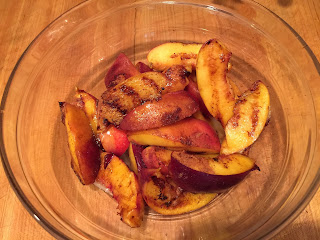 |
| They look like Morning Glories, but . . . |
You may know it
as Water Spinach or Kangkong. Until
searching out seasonal foods beginning with the letter Oo, I had never heard of
Water or Asian Spinach. When I saw
photos of it growing in its natural habitat it was obvious this would make for
a stunning addition to any garden! Ong
Choy is reported to do very well in hydroponic systems, with one report indicating it is a rather prolific ground cover in hot climates.
That’s Vegas! But I can’t say
I’ve ever seen this plant used as ground cover in our valley. Any Master Gardeners out there with
information on growing this plant as ground cover please share. If it’s indeed do-able I’d be interested in trying. I think it's lovely, as the flowers look similar to Morning Glories, to which Ong Choy
is related. Another surprise, sweet
potatoes happen to be a close relative, though I don't see the connection.
A summer vegetable, Ong Choy, literally grows in the water ways of
tropical and subtropical climates, loves lots of direct sunlight (Vegas) and
can be rather invasive due to its abundant and fast growing nature. The entire plant is edible, though it is not
recommended it be eaten raw. Unlike
American Spinach, Ong Choy is a bit heartier and takes longer to cook.
I was able to find Ong Choy at one of the markets on Spring
Mountain, as this is a commonly used ingredient in Asian cuisine. The stems are much thicker around than
American Spinach and I was surprised to see they are actually hollow! Yet the hollowness doesn’t speed up the
cooking process, the stems still need to be cut and added to the wok or pot before the leaves. Which also need to be chopped, as they tend
to get a bit stringy, kind of like the stems of artichokes. As a matter of fact, Ong Choy has that same
nutty flavor characteristic found in artichokes. High in vitamins A and C as well as a good
source of calcium makes Ong Choy a healthy choice for pasta dishes and other
vegetarian entrees.
Ingredients
2 bunches Ong Choy – rinsed and towel dried 3 cloves fresh garlic – minced
3-4 fresh red chili peppers * 1
tablespoon rice wine vinegar
1 tablespoon fermented bean curd 1 tablespoon
fresh ginger – grated
1 tablespoon soy sauce – low sodium ½ cup raw peanuts –
roughly chopped
1 yellow bell pepper - seeded and chopped 1-2 clean carrots - shaved with a peeler
1 cup sliced mushrooms - any kind 1-2 tablespoons grapeseed oil
1 cup sliced mushrooms - any kind 1-2 tablespoons grapeseed oil
Cooked rice or noodles for serving
* Special Tool: Wok or large deep skillet if you do not have a Wok
* Special Tool: Wok or large deep skillet if you do not have a Wok
Procedure
1)
Cut and remove bottom ends of stems on Ong Choy
– chop remaining, usable portion of stems as well as chopping the leaves
2)
Pour grape seed oil into hot wok
3)
Add garlic and sauté just until soft – don’t let
the garlic burn, it will taste bitter
4)
Add the chopped Ong Choy stems and allow to cook
about 2-3 minutes
5)
Add red chili peppers, Ong Choy leaves, grated
ginger, rice wine vinegar, soy sauce, bean curd and sauté another 2-3 minutes
6)
Add chopped peanuts and cook one more minute
Taste for seasoning adding salt or pepper to taste. Though you really shouldn’t need any since
the soy sauce and bean curd are a bit salty and the red chilies should provide
you with enough heat.
*Remind your guest not to eat the whole red chilies – unless
they can take the heat.
Serve over cooked rice or noodles Makes 4 servings
 |
| Ready to add the carrots and bell pepper |







